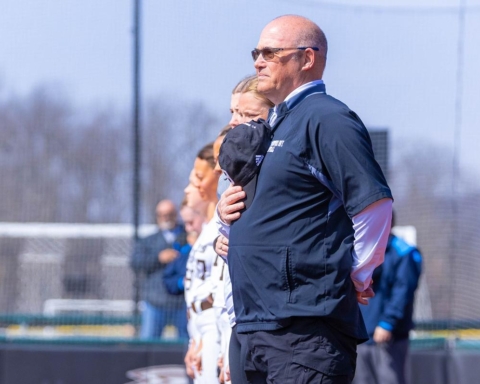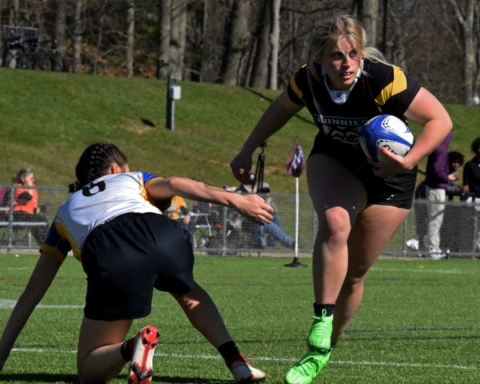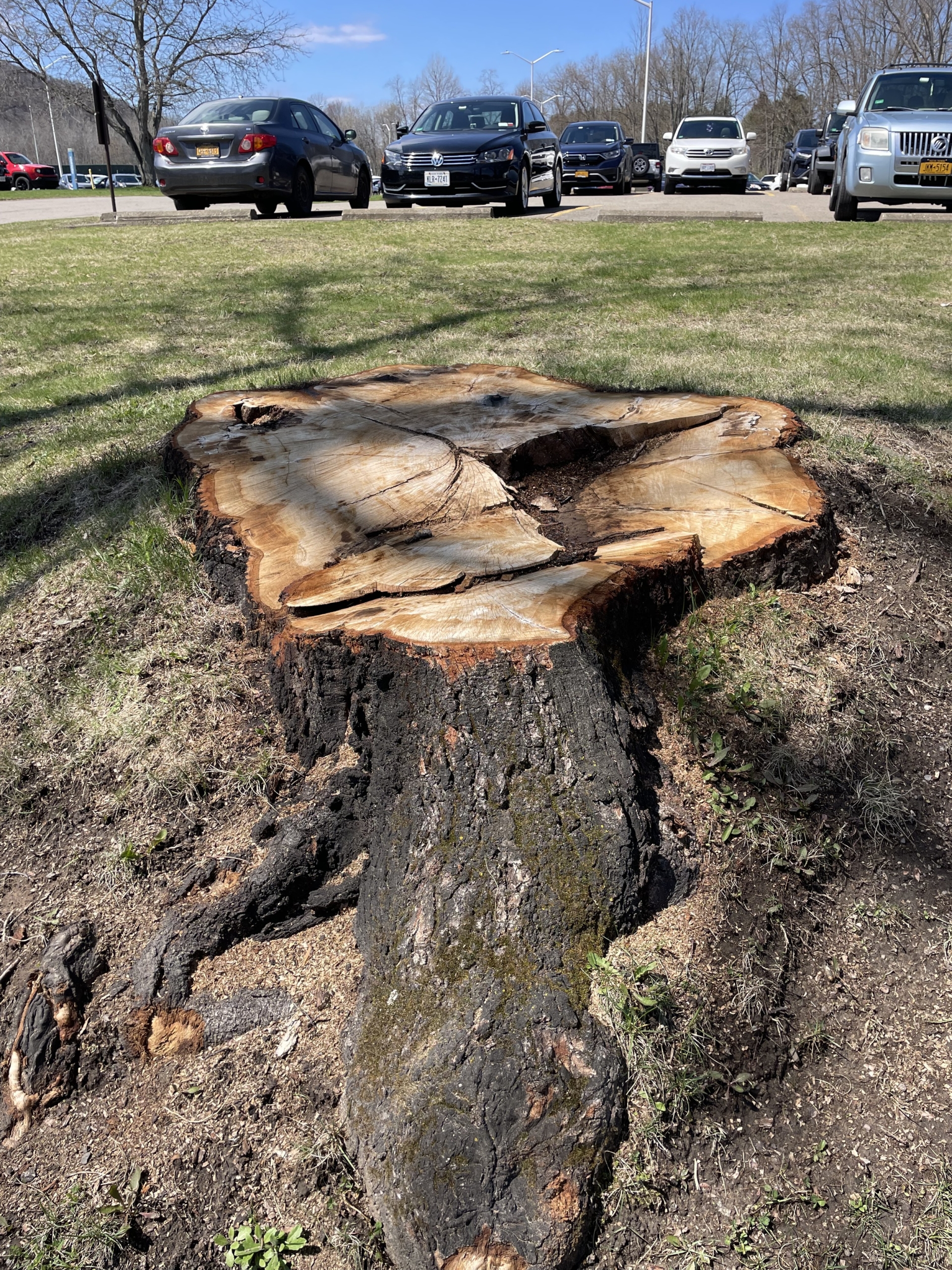An AED located in the Reilly Center
David Scibilia/The BonaVenture
BY: DAVID SCIBILIA, NEWS EDITOR
A student-athlete collapsed during practice on St. Bonaventure University’s all-weather field in April 2022. The player was experiencing cardiac arrest — a medical emergency where the heart stops beating.
Jacob Schoeberl, a junior at Bonaventure and an EMT — was watching a softball game on an adjacent field at the same time and heard about the emergency. Taking the AED, an automated external defibrillator, from the softball game, Schoeberl rushed over to deliver a life-saving shock to the student.
“There was no AED at that field for [that] practice,” Schoeberl said. “Once it was brought over from the [softball] field, I was able to use it properly.”
An AED is a device used to detect the heart rhythms of people experiencing cardiac arrest and deliver an electric shock if needed. These devices are most effective if used within a three to five minute timeframe of the individual experiencing cardiac arrest.
“The survivability rate of cardiac arrest is not great,” Schoeberl said. “[That’s why] AEDs are important.”
According to the St. Bonaventure Safety and Security website, there are publicly available AEDs located in the Sandra A. and William L. Richter Center, the Reilly Center, the William E. and Ann L. Swan Business Center, Plassmann Hall, the Murphy Professional Building, the Maintenance Building, the Administration Building and Francis Hall.
No residence hall other than Francis has a publically available AED located in it.
“I don’t think there’s an adequate amount of AEDs on campus,” Schoeberl said. “It’s gonna sound expensive, but there should be a publicly available AED in every single building.”
Gary Segrue, associate dean for Campus Safety, holds a different view than Schoeberl.
“I believe we have deployed an adequate amount of AEDs, and they are strategically located to benefit our entire community,” Segrue said.
In addition to those publicly available, there are a number of other AEDs on campus.
“We have many other AED units on campus, either mobile or in an area with restricted access,” Segrue said. “MERT [the Bonaventure student-run medical emergency response team] is equipped with an AED, Safety and Security officers have AEDs while on patrol, athletic training staff and club sport training staff are equipped with AEDs and [the university has a] contract with a local private ambulance service [that is] equipped with an AED at all physical contact sporting contests such as rugby, lacrosse and basketball.”
However, Schoeberl notes that just because MERT has an AED, that doesn’t guarantee a response within the three-to-five-minute timeframe.
“One of the MERT officers carries an AED, but you don’t know where they are coming from,” Schoeberl said. “If the emergency is in De La Roche, and they’re responding from townhouses, I guarantee it’s gonna be more than five minutes.”
Anthony Wagner, a freshman biology major and the treasurer of MERT, agreed with Schoeberl’s comment.
“Even though one of the officer bags has an AED in it, there’s always a chance it may fail,” Wagner said. “There’s also a chance that a bystander may need to use an AED, and they [wouldn’t have access to] the one in the officer bag.”
Segrue hopes that in situations where MERT couldn’t meet the three-to-five-minute standard that one of the other AEDs would have been deployed.
“Given the number of strategically located AEDs, the number of AEDs possessed by our emergency responders, I believe the standard [of three-to-five minutes] is achievable,” Segrue said. “We also have AEDs located in areas that are not open daily to the campus community, such as the [Center for Student Wellbeing], the [Dennis R. DePerro] School of Health Professions and the [Regina A.] Quick Center for the Arts.”
Schoeberl holds firm that all residential buildings should have at least one AED in them.
“Ideally, there would be one on each floor,” Schoeberl said. “If there is one in every lobby of the buildings, it eliminates the need to leave the building to go and find an AED. You really don’t want to leave the building [in an emergency]. The adrenaline will be pumping and you’re not going to be thinking straight — you don’t want to add more steps than necessary.”
Additionally, Schoeberl believes better publication of AED locations could save someone’s life.
“[The university] makes public information on how to exit buildings for a fire and makes public information about what to do if there’s an active shooter,” Schoeberl said. “Right now, there is only a list pretty far down the Safety and Security page [on the university website] that shows AED locations. Another solution could be better circulation of where the closest AED is.”
Schoeberl believes that the risks outweigh the cost factors when it comes to AEDs on campus.
“Cardiac arrest does not discriminate,” Schoeberl said. “The chances of cardiac arrest are really low among college students, but they’re still not zero.”
scibild22@bonaventure.edu






